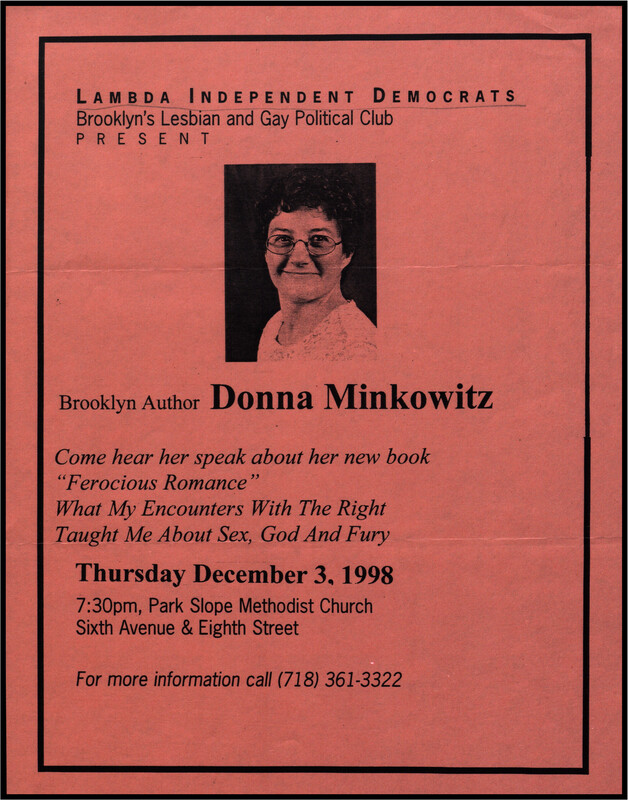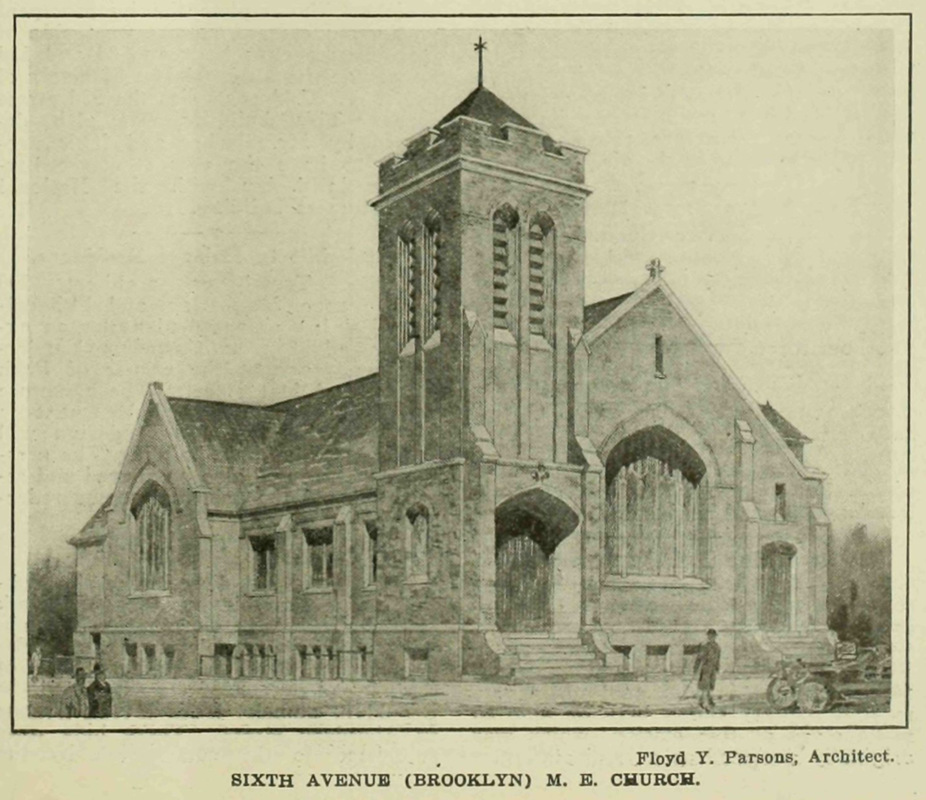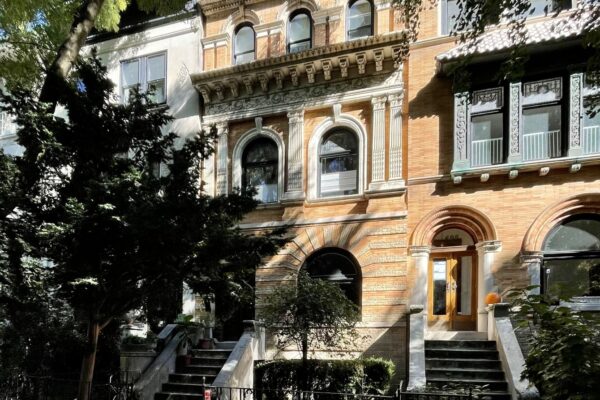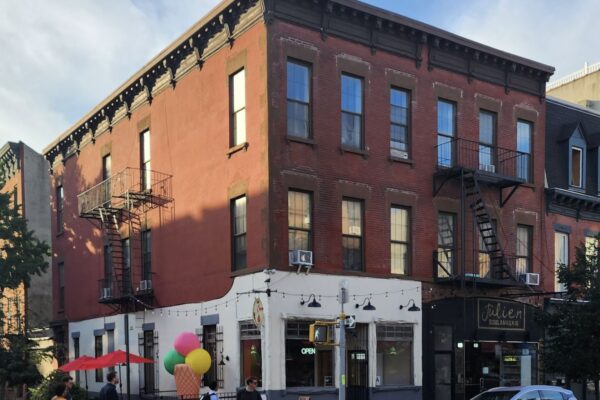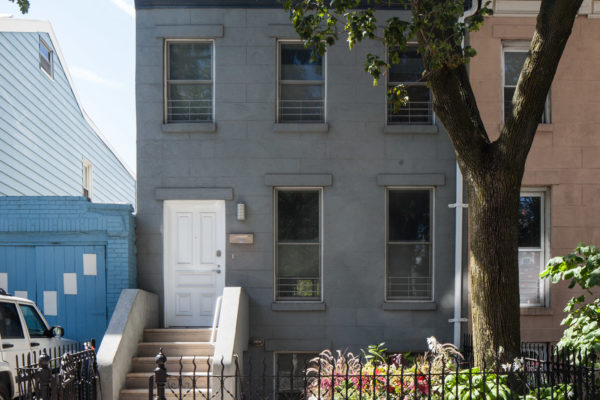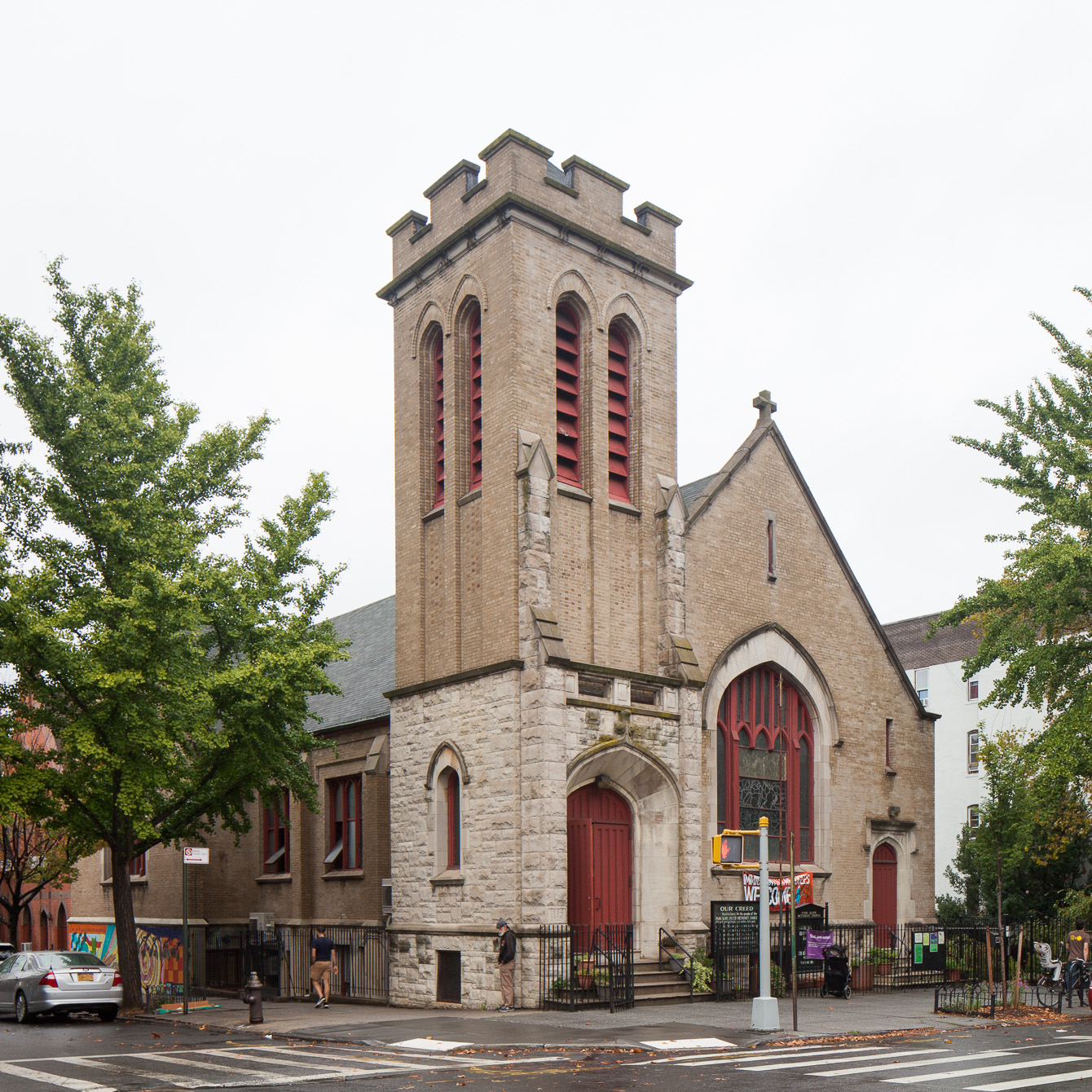
Park Slope United Methodist Church
overview
The Park Slope Methodist Church, founded in 1884 as the Sixth Avenue Methodist Episcopal Church, transitioned from being less involved in political matters to becoming a champion of local activism in the 1970s, particularly for Park Slope LGBT residents after 1985.
Under new leadership, it grew into a prominent meeting location for rallies and a hub for diverse LGBT community organizations.
On the Map
VIEW The Full MapHistory
The congregation of the Sixth Avenue Methodist Episcopal Church occupied a building (currently home to Camp Friendship) located at 339 8th street until 1915, when it constructed a new building on the vacant lot next door, at the corner of 6th Avenue, to accommodate a growing local population. In 1930, it merged with the 18th Street Methodist Episcopal Church to form the Park Slope Methodist Episcopal Church. Its name became Park Slope United Methodist Church in 1968.
Unlike other churches in the neighborhood, Park Slope United Methodist Church was not active and grounded in progressive social causes and politics until the arrival of Rev. Finley Schaef in 1972. In response to dwindling membership and demographic changes in the neighborhood, Rev. Schaef started advocating for a new socially-minded ethos that would represent the concerns of these new local residents. During his 25 years in the congregation, he expanded community activities and welcomed a diverse range of local civic groups to use the building for meetings. Shortly after, the church adopted a new creed, but despite its early visibility in anti-war and anti-racism campaigns, it was not until 1985, when it became a United Methodist reconciling church, seeking the inclusion of people of all sexual orientations, that the words “straight and gay” were added. The revised creed (visible on a bronze plaque at the church entrance) reads: “Hand in hand, We the people of the Park Slope United Methodist Church – old and young, black and white, rich and poor, straight and gay – unite as a loving community in covenant with God. Summoned by our faith in Jesus Christ we commit ourselves to work for the humanization of urban life and towards physical and spiritual fulfillment.” In the second half of the 20th century, United Methodist Churches faced internal divisions over LGBT issues, which led congregations, such as the Park Slope United Methodist Church, to identify as reconciling churches, advocating for LGBT inclusion and acceptance within the United Methodist Church.
The 1990s was the neighborhood’s heyday of political activism. During that time, the Park Slope United Methodist Church developed further as an established space for the LGBT community. It not only expanded its range of events and internal advocacy, but it also successfully branched out to collaborate with organizations in the neighborhood for fundraisers and lectures. The church notably held town halls in collaboration with Brooklyn’s Lambda Independent Democrats, a Brooklyn-based LGBT political club, during which residents were given the opportunity to question local politicians, express grievances, and ensure accountability towards the community. The congregation started a local chapter of the United Methodist Women (UMW) in the early 1990s, with a special focus on outreach to lesbians in the area. The chapter notably strove to empower women and advocate against traditionalist sermons.
The church continues to be an active community hub in the neighborhood, continually adapting in response to socio-political changes and local concerns. It continues to participate annually in the NYC Pride March and Brooklyn Pride festival and march.
Entry by Charlotte Boulanger, project consultant (November 2023).
NOTE: Names above in bold indicate LGBT people.
Building Information
- Architect or Builder: Floyd Y. Parsons
- Year Built: 1915
Sources
Brooklyn Lesbians Together Newsletter, Winter 1989-1990 Vol. 1, #6.
“Ortega Visits NYC Church, Defends Policies,” Boston Globe, July 28, 1986.
Eric Marcus, Making History: The Struggle for Gay and Lesbian Equal Rights: 1945-1990: An Oral History (New York: Perennial, 1992).
Gustav Niebuhr, “Religious Left Draws Strength from Grass Roots,” The New York Times, June 21, 1997, p. 12.
Julius Mintzer, A Neighborhood Study of the Park Slope Community (New York: Brooklyn Council for Social Planning, 1940).
Lambda Independent Democrats (LID) [1 of 2], November, 1988-June 12, 2009, Lesbian Herstory Archives.
Do you have more information about this site?
This project is enriched by your participation! Do you have your own images of this site? Or a story to share? Would you like to suggest a different historic site?
